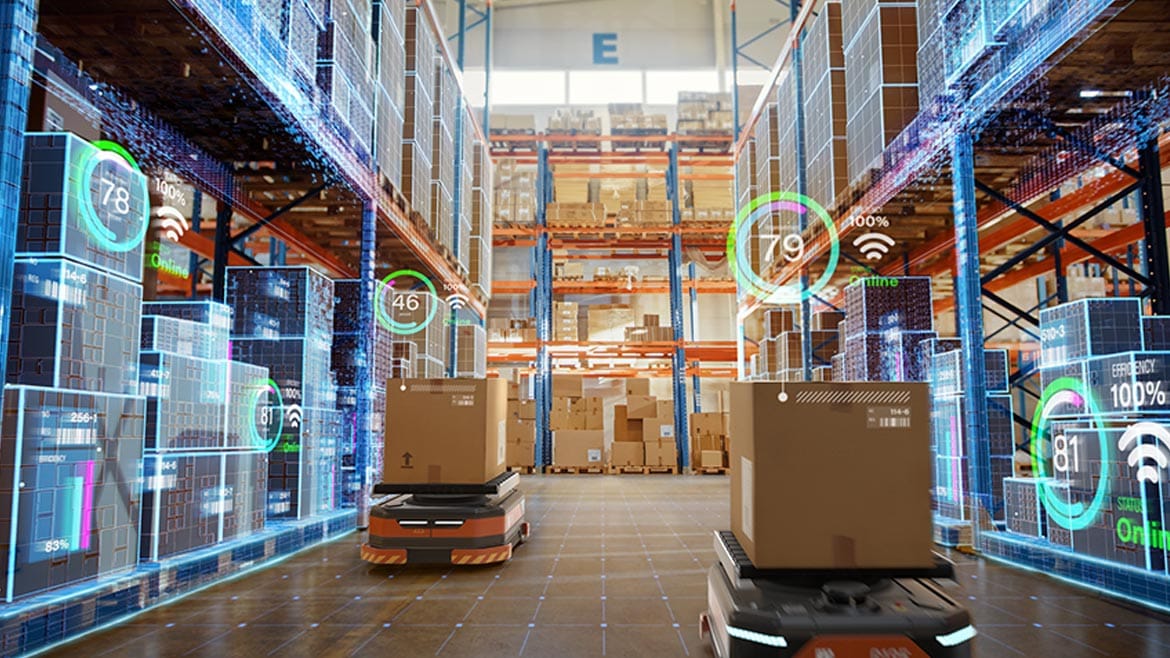
19 Feb Supercharging Your Warehouse Logistics: How to Optimize Routes, Cut Expenses, and Over deliver to Customers
So much of your customer experience depends on efficient logistics—especially when it comes to warehouse management and dedicated routes that bring products straight to your customers. Mastering these elements ensures the right goods reach the right place at the right time, all while saving your business money.
What Is Logistics?
Logistics is the framework that organizes how businesses acquire, store, and move goods. It spans everything from inventory management and procurement to warehousing, transportation, packaging, and risk assessment. For small and medium-sized businesses (SMBs)—particularly those in e-commerce—effective logistics is crucial for staying competitive, reducing costs, and delivering on time.
Key Components of Logistics
- Moving materials and goods between locations
- Sourcing raw materials from suppliers
- Reliable transportation solutions (including dedicated routes)
- Warehousing and storage
- Part of the broader supply chain management process
- Investing in systems and infrastructure that scale with business growth
What Logistics Is Not
- An afterthought or last-minute fix
- The entire supply chain (it’s just one component)
- Something your business must handle alone—outsourcing is an option
For more insights on warehouse best practices, check out our
Protocol Logistics Blog (internal link).
Logistics vs. Supply Chain Management
Logistics often gets confused with “supply chain management.” While supply chain management covers everything from sourcing raw materials to delivering finished products, logistics focuses on the processes your business can directly control—such as packaging, transportation, inventory management, and storage.
- Supply Chain: The wider network of raw material sourcing and goods distribution—often beyond your immediate control.
- Logistics: The specific segment of the supply chain that your business manages directly, covering how you store, transport, and handle products.
Why Logistics Matters
Studies show that over 60% of U.S. and European companies lost up to 20% in revenue in 2020 due to logistics disruptions.
[1] While global events played a part, these figures highlight the vital role of a refined logistics strategy—especially for SMBs on tight margins.
Logistics also directly affects the customer experience. For instance, 37% of online shoppers who encounter an out-of-stock message will purchase from a competitor
[2]. Inefficient inventory forecasting or product transportation can quickly diminish customer satisfaction and loyalty.
Defining Logistics Management
Logistics management involves the strategic coordination of materials and finished products from origin to consumption. Often summarized as the “Seven Rs,” it ensures the right product, in the right quantity, at the right time, in the right condition, in the right place, for the right customer, at the right cost.
Tips for Optimizing Your Logistics Strategy
1. Set Clear Goals
Before overhauling your logistics, identify your main objectives:
- Reducing costs
- Increasing revenue
- Preventing overstock
- Enhancing delivery times
SMBs often prioritize cutting expenses, but improvements in speed and accuracy can also protect your bottom line.
2. Embrace AI and Automation
According to a McKinsey study, AI-driven logistics can reduce costs by 15%, cut inventory by 35%, and boost service levels by 65%. Automation and data analytics can transform warehouse management, route optimization, and beyond.
3. Inventory Management
A Wakefield Research survey notes 73% of retailers struggle with forecasting inventory demand, while 65% find tracking inventory throughout the supply chain challenging. Automating inventory management can help you:
- Monitor incoming and outgoing stock in real time
- Identify turnover patterns to avoid shortages or surpluses
- Improve demand forecasts using multi-channel sales data
- Automatically reorder items when stock is low
- Optimize warehouse space for high-demand products
- Compare supplier rates for cost savings
- Reduce human error with automated reporting
4. Warehousing
Success depends on products arriving, being stored, and shipping without complications.
- Check Your Picking Accuracy: Reduce return rates and maintain customer satisfaction.
- Review Your Layout: Position bestsellers near packing stations to save time.
- Consider Robotics: Automated picking robots can navigate floors in real time, speeding up order fulfillment and cutting costs.
5. Transportation & Dedicated Routes
Transportation is a major expense. Whether you rely on external carriers or use your own vehicles, focusing on dedicated routes can significantly reduce costs and transit times. Track your:
- Average Delivery Time
- On-Time Delivery Rate
For in-house fleets, route-planning solutions like
Stream or
OptimoRoute use real-time data and vehicle specs to chart optimal routes—maximizing speed and minimizing expenses.
6. Packaging
Excessive packaging increases shipping costs and hurts sustainability efforts. Right-sizing packaging saves warehouse space, keeps costs in check, and aligns with environmental best practices.
7. Delivery
Your Order Accuracy Rate is crucial. Failed deliveries inflate expenses and upset customers. Offer flexible delivery options—time slots, parcel lockers, or neighbor drop-offs—to boost first-attempt success rates.
Partnering for Better Logistics
While large enterprises often manage logistics internally, smaller businesses frequently outsource to fulfill market demands. Solutions range from 1PL (owning the entire delivery process) to 5PL (fully integrated for high-volume e-commerce). If you’re seeking a reliable partner, consider
Protocol Logistics to streamline everything from warehousing to final delivery. You’ll benefit from our distribution network and expertise, allowing you to stay competitive with same- or next-day shipping promises.
Common Logistics Questions
What Are Logistics Nodes?
They’re the locations or systems where goods are received, stored, or shipped—like warehouses, distribution centers, and retail stores, as well as online platforms for ordering and data management. Smooth operation of these nodes ensures an efficient supply chain.
What Are the Major Trends in Logistics?
Businesses demand more agility and flexibility, driven by higher customer expectations and shorter delivery windows. Rapid digitization—empowered by technologies like 5G—enables real-time visibility and faster data exchange, paving the way for efficiency gains.
Ready to Level Up Your Logistics?
When you refine your warehouse logistics and dedicate routes to serve customers effectively, you save costs and enhance service quality. Protocol Logistics can guide you through every step—from inventory management to final-mile delivery—so you can focus on what you do best: delighting your customers.


No Comments